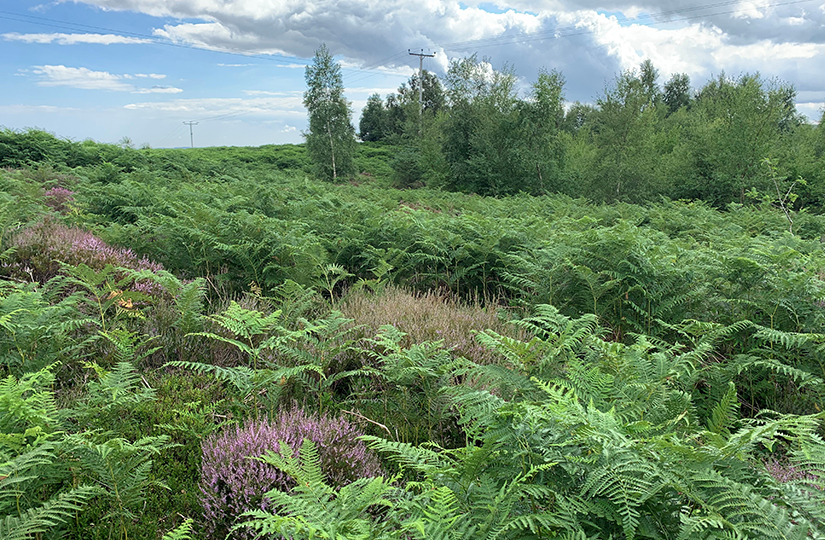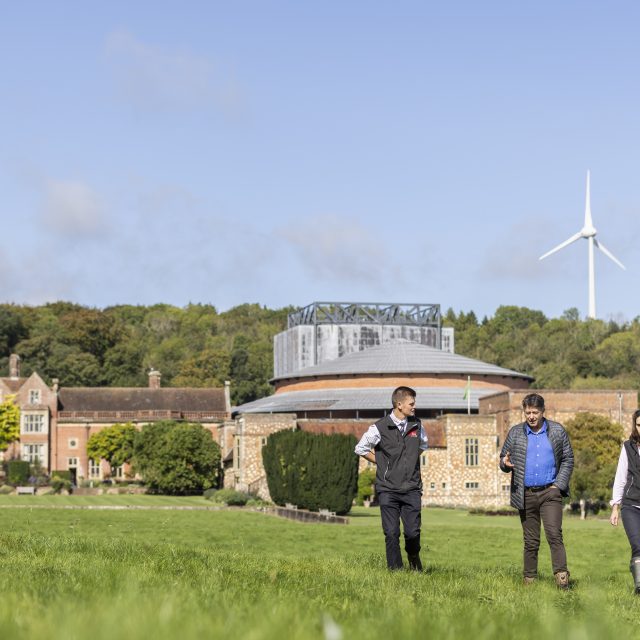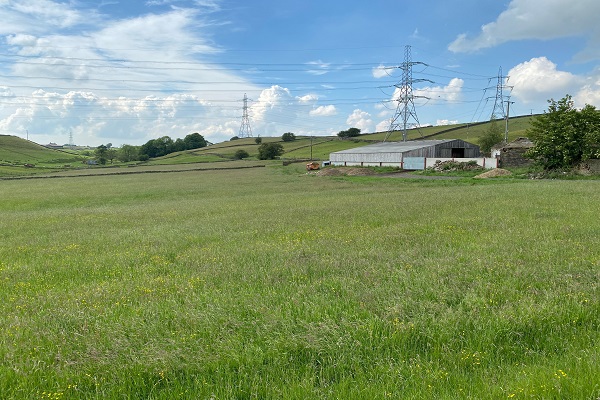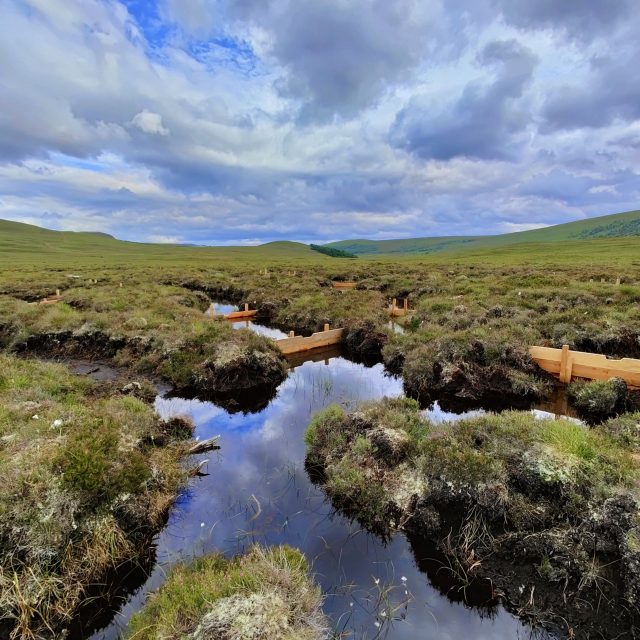Bracken: A new look at an old adversary
There can be few native plants that have caused as many management headaches to landowners – particularly, but not exclusively, in the uplands of the UK – as bracken. It is an extraordinarily successful species reputed to be present on every continent on Earth apart from Antarctica, but it is the species’ ability to colonise and replace valuable grazing land and rare habitats with a largely sterile monoculture that have made it a powerful adversary.
The battle with bracken has ebbed and flowed for decades and many weapons have been deployed against it. Although there have been some success stories, the picture is of more and more land disappearing under dense shade and a thick layer of litter suppressing all other growth. Exact figures of how much land is covered by bracken and its rate of spread are hard to come by and are often hotly debated but it would seem that circa 1.6% of UK land is shaded by the green peril.
Bracken is the largest of the fern family native to the UK and was originally thought to be a woodland plant kept in check by shading created by the canopy of the wildwood. Over many centuries, this woodland has been cleared allowing bracken to colonise more open habitats and it can now be found on well-drained soils of all types at a variety of altitudes with the exception of wet and waterlogged areas.
The plant emerges in spring from a vast network of underground rhizomes usually found in two distinct layers up to a metre deep. It was always considered by our forebears that the presence of bracken was an indicator of better-quality soils particularly in the uplands. The saying “Where there’s bracken, there’s gold” is well known.
Bracken – how it spreads
It grows rapidly during the season with the fronds quickly hardening and reaching heights of up to two metres. The visible parts of the plant die back in the autumn replenishing the food stores within the rhizomes and can replicate either by spores found on the underside of the fronds or vegetatively from underground, potentially spreading significant distances in a single season.
This aggressive habit colonises ground quickly and can form dense monocultures which precludes many other species although it can provide habitat for some specialists, including bluebells, that are relics of ancient woodland which complete their life cycle before the bracken canopy closes. This replicates natural woodland conditions.
Many of the habitats that society values today are the product of agricultural systems that ceased to be economically viable many years ago such as species rich hay meadows and lowland heaths. These systems were much more intensive than any comparable modern management and the cessation of various industrial and agricultural techniques has also allowed bracken to thrive.
In the past, bracken was harvested for livestock bedding, thatching of roofs, to provide potash for glass-making, packing for fish and fruit and an insulating material for the over-winter storage of root crops. It was this extensive utilisation of the plant coupled with trampling from cattle that kept its spread to a manageable level.
Bracken problems
In addition to its land colonisation habits, reducing the amount of grazing land available to livestock, the charge sheet against bracken is considerable; there is evidence that the spores of the plant are carcinogenic, and it also provides the perfect harbour for ticks which can impact on the health of humans, livestock and wildlife alike.
Rewilding, where that is an objective, will certainly take much longer in a landscape dominated by a bracken monoculture. Dense stands of bracken can greatly slow down natural regeneration of woodland and accumulations of dry bracken litter can increase the risk and severity of wildfires which are becoming increasingly frequent due to climate change. Ironically, controlled burning of bracken beds practiced in the past has been completely counter-productive as this actually assists the spread of the species.
The rhizomes are even known to have a significantly negative effect on buried archaeological features.
Bracken control strategies
More recent times have seen bracken control involve a whole series of strategies, none of which have a direct economic return and place a significant financial burden on landowners funded out of their own pockets or via a range of agri-environment schemes. Bracken control has become a specialist industry for some contractors and considerable sums continue to change hands to hold back the green tide.
Many techniques have been tried and tested and all work to a greater or lesser degree in individual situations. The single most effective treatment of larger areas has been the use of the herbicide Asulam which targets ferns specifically, as well as a small number of other species. However, its use has been subject to annual approval since 2012, with a number of conditions attached to its application that can be challenging. In 2023, its use for bracken control has also only been approved in England, with Scotland and Wales choosing to ban its use.
Mechanical control has its place with cutting, crimping and bruising relatively effective in certain circumstances. Glyphosate can be used, particularly early in the season before fronds harden off, but as a broad-spectrum herbicide its use is restricted to monoculture stands or application by weed wiper.
The battle against bracken is continuing but has reached something of a crossroads given we don’t appear to have the tools to manage it effectively. It may now be time to step back and consider a different approach, particularly as new ways of delivering land management and an increasing awareness of environmental matters such as chemical use and carbon sequestration begin to dominate the agenda.
There are possibilities for bringing bracken back into use as a commercial crop, some of which have been tried in the past and others which are just emerging. One of the most significant challenges is the harvesting of the species which, with some exceptions such as the Somerset Levels, are in places where it is extremely difficult to deploy conventional machinery.
Using bracken as a base for compost is certainly one option that is available now but there may also be future uses still to be fully brought to the market. Bracken fuel briquettes for domestic use is in an early stage of development. Could this be extended on an industrial scale to feed biomass boilers? Could bracken be used in anaerobic digestion plants to produce biogas? Is there any mileage in revisiting some of the old uses for the plant like the provision of potash?
One thing is for certain, the debate about how to manage bracken to optimise the agricultural and ecological value of land will continue and we may, in time, find a way of living in equilibrium with the species. As we enter this new and very different era of environmental land management, perhaps there is merit in accepting its position in our ecosystems, while still trying to prevent its spread.
One final thought. It would appear that very little, if any, research has been conducted on the carbon sequestration properties of bracken. Given its vigorous growth and the fact that the rhizomes alone can weigh up to 300 tonnes per hectare, is there a chance that this old adversary may become a friend in time?
This article was updated in June 2023 to reflect the decision not to authorise the use of Asulam in Wales and Scotland.






